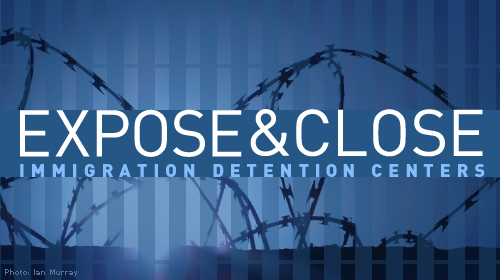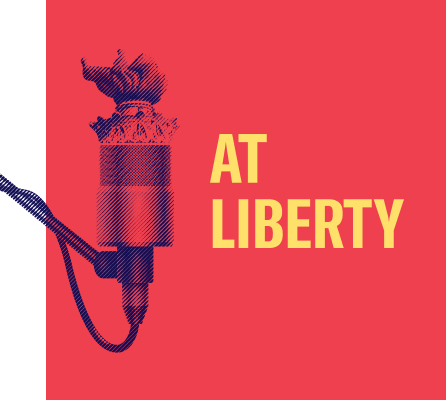
In the last 15 years, we’ve witnessed a dramatic expansion in the jailing of immigrants, from about 70,000 people detained annually to about 400,000. In the mid-1990’s, during the height of an anti-immigrant backlash, Congress passed a series of harsh measures that led to a vast increase in unnecessary detention. This trend has been exacerbated by the private prison industry and county jails looking to exploit immigrant detention for profit.
The cost of this system today is 1.7 billion dollars at taxpayer expense.
In detention, immigrants continue to be subject to punitive treatment, and are denied basic needs, such as contact with lawyers and loved ones, inadequate food and hygiene, and access to fresh air and sunlight. They continue to get injured, sick, and die without timely medical care. They continue to endure racial slurs and discriminatory treatment by prison staff, and are vulnerable to rape and assault. Since 2003, a reported 131 people have died in immigration custody.
These conditions are unacceptable and not in the spirit of the Administration’s promised reforms.
The Stewart Detention Center in Georgia in many ways exemplifies the problems with using remote, highly restrictive facilities to hold immigrants.
At Stewart, the medical and mental health care unit is understaffed, resulting in lack of adequately licensed health care professionals, delays in receiving care, and inadequate mental health care services. From April 2009 to the summer of 2012, there was no doctor at Stewart, which means the facility was without a physician for more than three years. Currently there is only one doctor and only seven nurses on staff at the 1,752-bed facility, which is a ratio of 1 nurse per 250 prisoners. As the ACLU of Georgia documented in our May 2012 report, “Prisoners of Profit: Immigrants and Detention in Georgia,” immigrants reported that it can take days or even weeks for medical requests to be answered. In addition, individuals with mental disabilities are routinely placed in solitary confinement leading to further deterioration of their mental health.
One such individual is Ermis Calderon, a young man who suffers from bipolar disorder and frequent panic attacks. Before his detention at Stewart, Ermis had struggled with addiction issues and depression. Both had been effectively treated through counseling, medication, and support programmes. All that ended when he arrived at Stewart. Less than a week after his detention at Stewart, without a support system, a therapist, or his regularly prescribed medication, Ermis suffered a panic attack. While waiting for an appointment to re-visit his medication levels, Ermis sensed a panic attack coming. “I just wanted to take my clothes off so I could breathe, so I asked the guard if I could be taken back to my cell,” he said. The guard refused.
As he felt his heart begin to race and his vision blur, Ermis asked if he could at least go to the restroom. Again he was denied. An attack set in. He began hitting himself in the head and striking his head against the wall. Having observed this, four guards threw him to floor, cuffed him, and held him to ground until he was still. Although no violence or threats of violence occurred during the episode, Ermis was placed in segregation and kept in segregation for almost the entire time he was detained, which was over six months. When the ACLU of Georgia spoke with Ermis in September 2011, his knuckles were bruised from punching the wall of his cell. His arms and wrists were still raw and scabbed from a recent suicide attempt.
I feel like I’m going crazy. My medicine is always changing, and it makes me crazy. When I get upset, they just give me more medicine. I can’t tell them I’m really upset or they just put me in a helmet and handcuffs for a few days. That’s torture! I don’t see anybody. I don’t really care about anything. I just want to get out and get into a program that will help me.
Growing outrage in the community led to Friday’s vigil and march in Lumpkin, Georgia calling for the closing of the Stewart Detention Center. As part of a national campaign to expose and close the 10 worst facilities in the country, more than 200 community leaders and advocates gathered for a vigil at Lumpkin town square and then marched to the Stewart Detention Center. Among our speakers were individuals formerly detained at the Stewart Detention Center, such as Pedro Guzman, as well as family members of currently detained immigrants.
“After twenty months away from home, you lose faith, you feel worthless, this place breaks you, it is made to break your soul. The constant screaming and verbal abuse the guards inflict on the detainees is just made to break your soul and handicap you,” said Pedro Guzman.
Stewart is not the exception, but the rule, in immigration detention today. It is unacceptable to be spending billions in taxpayer dollars every year to contract with corporations and counties that perpetrate human rights abuses against this vulnerable population at a time of fiscal crisis.



